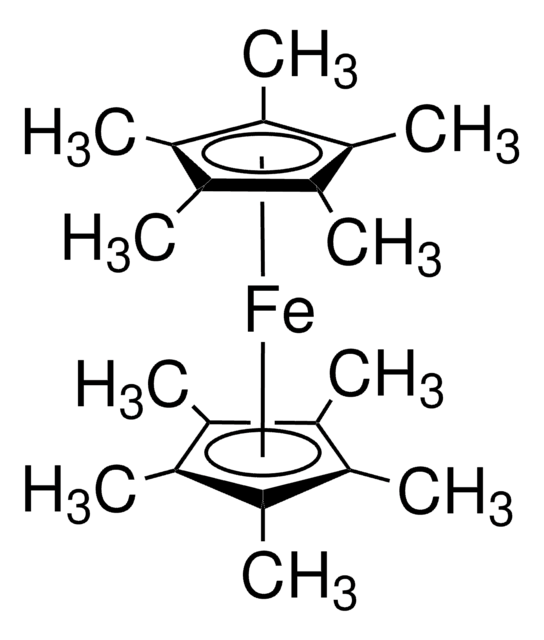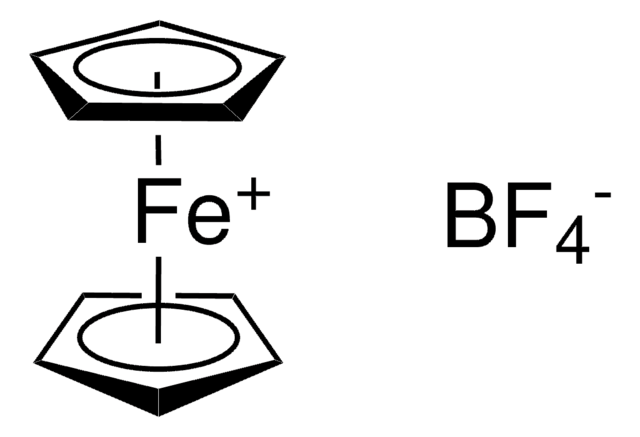339164
Bis(cyclopentadienyl)cobalt(II)
Synonym(s):
Cobaltocene
About This Item
Recommended Products
form
powder or crystals
solid
Quality Level
reaction suitability
core: cobalt
mp
176-180 °C (dec.) (lit.)
storage temp.
2-8°C
SMILES string
[Co].[CH]1[CH][CH][CH][CH]1.[CH]2[CH][CH][CH][CH]2
InChI
1S/2C5H5.Co/c2*1-2-4-5-3-1;/h2*1-5H;
InChI key
PXFGMRZPRDJDEK-UHFFFAOYSA-N
General description
Application
- As a dopant to prepare encapsulated carbon nanotubes with high thermoelectric conversion efficiency.
- As a CVD precursor to fabricate cobalt oxide thin films for various applications.
- As a redox-active anode species in Li-based redox flow batteries to achieve higher energy densities and energy efficiencies.
- As a catalyst for controlled/“living” radical polymerization of methylmethacrylate.
signalword
Danger
hcodes
Hazard Classifications
Carc. 2 - Flam. Sol. 2 - Muta. 2 - Resp. Sens. 1 - Skin Sens. 1
Storage Class
4.1B - Flammable solid hazardous materials
wgk_germany
WGK 3
ppe
Eyeshields, Gloves, type P3 (EN 143) respirator cartridges
Choose from one of the most recent versions:
Already Own This Product?
Find documentation for the products that you have recently purchased in the Document Library.
Customers Also Viewed
Articles
Atomic layer deposition meets various needs including semiconductor device miniaturization and nanoparticle coating.
The diversity of applications and nanostructured materials accessible using ultrasonic spray methods are highlighted in this article.
Spintronics offer breakthroughs over conventional memory/logic devices with lower power, leakage, saturation, and complexity.
Ultrasonic spray pyrolysis produces scalable nanomaterials like metal oxides and quantum dots for diverse applications.
Our team of scientists has experience in all areas of research including Life Science, Material Science, Chemical Synthesis, Chromatography, Analytical and many others.
Contact Technical Service













